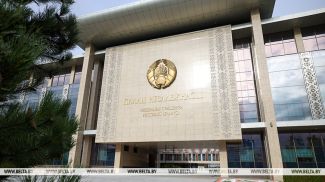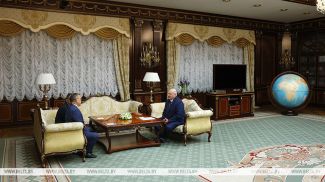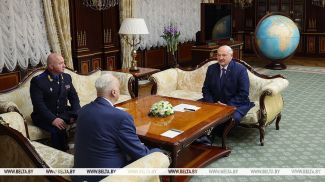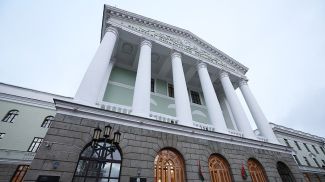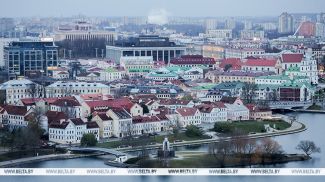
News of the story
"After the Fact: Lukashenko’s Decisions"
When do you think Belarus earned the right to call itself a space power? Maybe in March 2024, when Marina Vasilevskaya, the first cosmonaut in the history of sovereign Belarus, went on a research mission to the ISS? Or in July 2012, when the first Belarusian satellite - the BKA - was successfully launched into orbit? In fact, the space age in Belarus started in the 1950s. It was then when the space race between the Soviet Union and the United States began. Belarusian scientists and engineers participated in the development of many technological innovations, without which space flights would be simply unthinkable.
In this episode of BelTA’s YouTube channel “After the Fact: Lukashenko’s Decsions” we will tell you how Belarusians reinvented space instrumentation and taught satellites to view the Earth in great detail. What do the space industry, meteorology, forensics and the defense capability have in common? We will also tell you what enterprises Aleksandr Lukashenko calls "the enterprises of tomorrow" and how the Belarusian president was once gifted a unique Russian tank equipped with an equally unique Belarusian aiming system and what, according to the president, is a litmus test to assess the capabilities and abilities of a state.


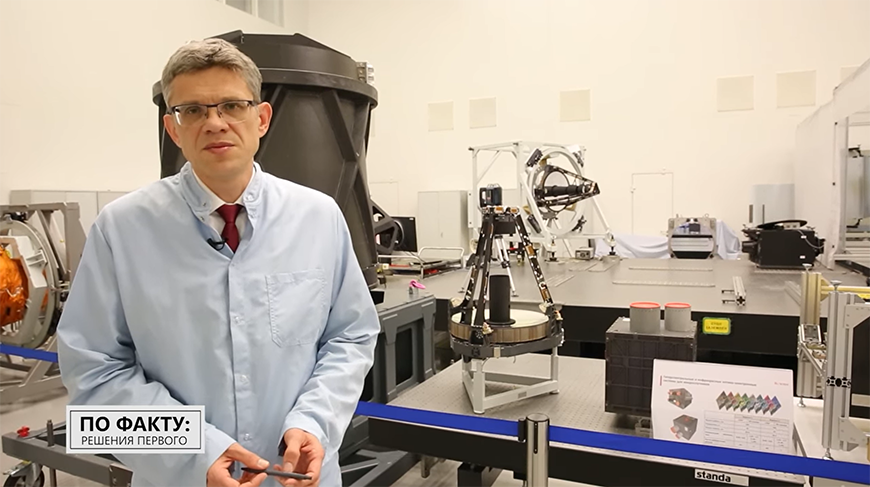
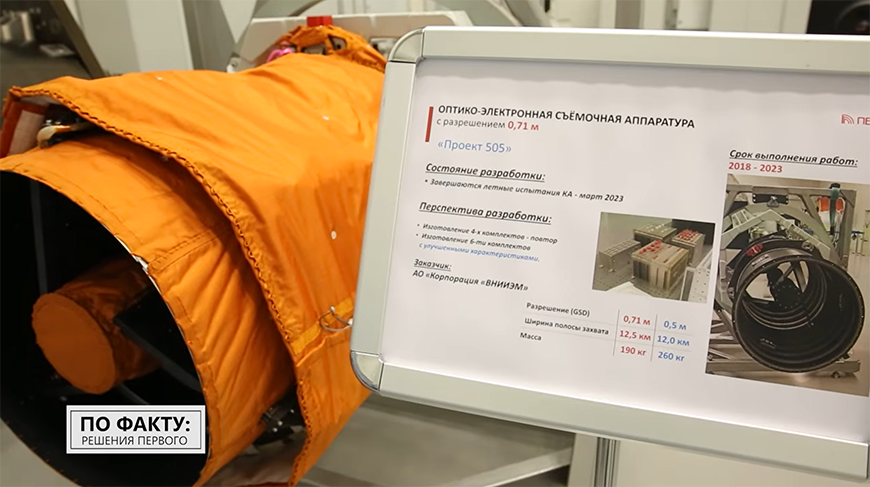
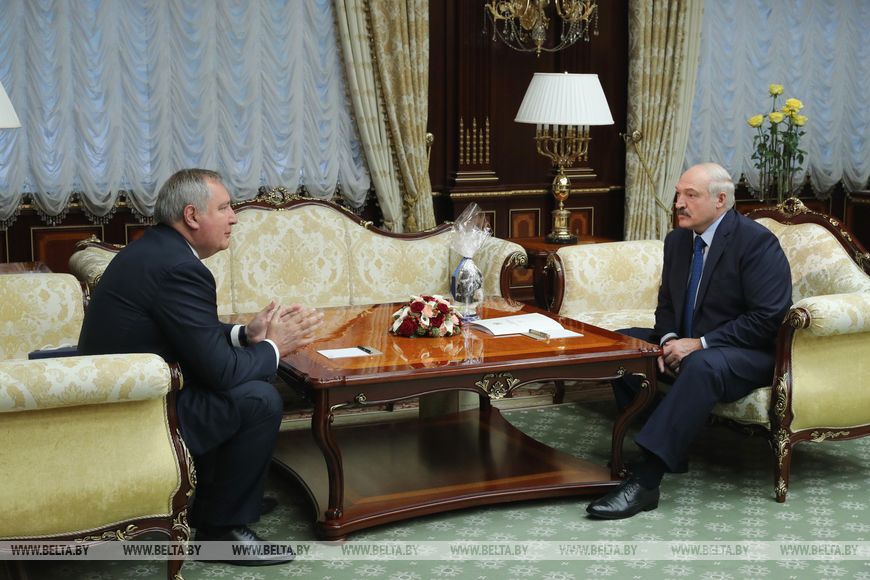
In this episode of BelTA’s YouTube channel “After the Fact: Lukashenko’s Decsions” we will tell you how Belarusians reinvented space instrumentation and taught satellites to view the Earth in great detail. What do the space industry, meteorology, forensics and the defense capability have in common? We will also tell you what enterprises Aleksandr Lukashenko calls "the enterprises of tomorrow" and how the Belarusian president was once gifted a unique Russian tank equipped with an equally unique Belarusian aiming system and what, according to the president, is a litmus test to assess the capabilities and abilities of a state.
How Belarus come to produce equipment for space systems
To find answers to these questions, we visited the Peleng enterprise, the leading optoelectronics manufacturer in Belarus. Although Peleng is an open joint-stock company, it is, in fact, a highly classified facility. The company was founded in 1974 when the Chief Designer Office of Minsk Mechanical Plant was unbundled into an independent enterprise - Peleng Central Design Bureau. It specialized in the equipment for remote sensing of the Earth and aiming systems for armored and special-purpose hardware.
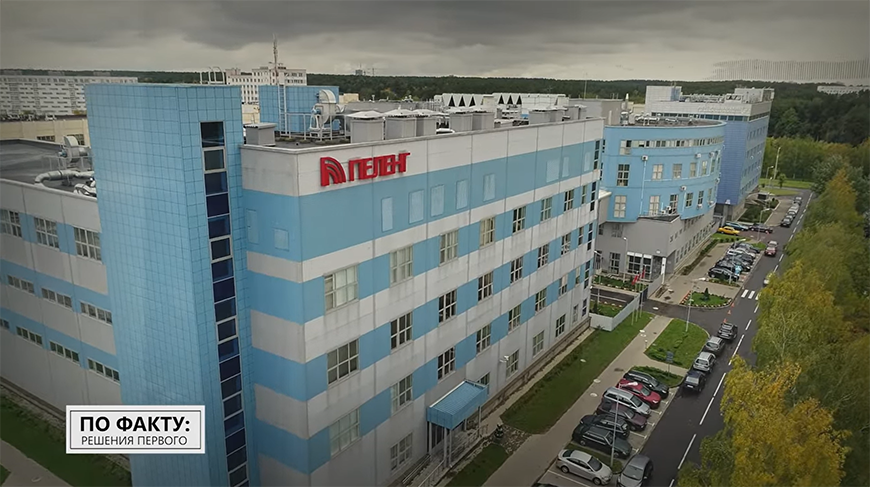
“The Central Committee of the CPSU and the Council of Ministers included BelOMO into a project to create a space topographic vehicle. At that time, the main manufacturers of optical systems were LenOMO and Krasnogorsk Optical and Mechanical Plant. They were overloaded with work, so this assignment went to Belarusians. The task was completely new and difficult for us. Nevertheless, the resolutions issued by the Central Committee of the CPSU and the Council of Ministers obliged us to complete everything on time,” said Vladimir Pokryshkin, Chairman of the Board of Directors of Peleng, Director General from 1998 to 2020.
Over the past 50 years or to be precise 65 years since the Chief Designer Office was set up at Minsk Mechanical Plant back in 1956, the company has designed, tested and mass produced a huge array of goods. A simple list of their names would take more than one episode of our project.
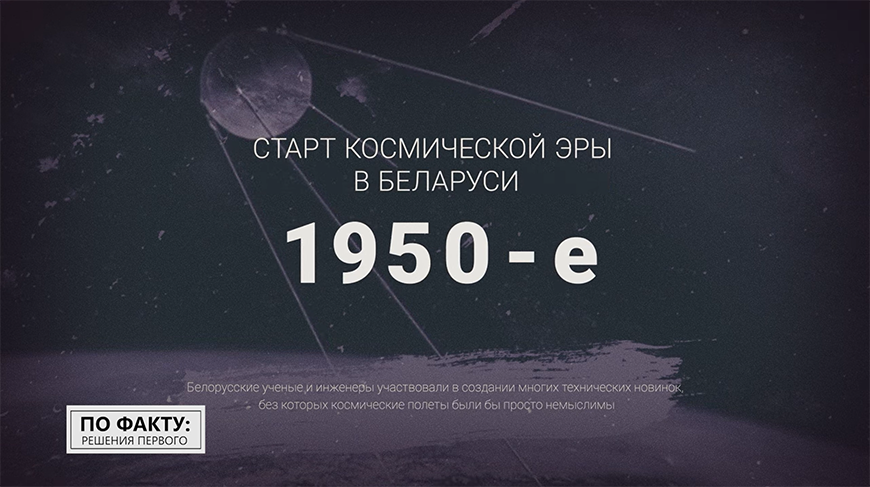
At the time of their creation, many developments had no analogues not only in the USSR, but also in the world. The company blazed a trail in a number of areas.
It is one thing to photograph the surface of the Earth and get a photograph. Another thing is to get a measuring photograph, i.e. a photograph that has no errors to be used for mapping. You know, a distortion of microns on the film will translate into distortion in kilometers on the map,” Vladimir Pokryshkin said. “Therefore, it was very difficult. A lot of technical work was carried out in terms of obtaining high accuracy. We did the job and achieved all the characteristics.”
To find answers to these questions, we visited the Peleng enterprise, the leading optoelectronics manufacturer in Belarus. Although Peleng is an open joint-stock company, it is, in fact, a highly classified facility. The company was founded in 1974 when the Chief Designer Office of Minsk Mechanical Plant was unbundled into an independent enterprise - Peleng Central Design Bureau. It specialized in the equipment for remote sensing of the Earth and aiming systems for armored and special-purpose hardware.

“The Central Committee of the CPSU and the Council of Ministers included BelOMO into a project to create a space topographic vehicle. At that time, the main manufacturers of optical systems were LenOMO and Krasnogorsk Optical and Mechanical Plant. They were overloaded with work, so this assignment went to Belarusians. The task was completely new and difficult for us. Nevertheless, the resolutions issued by the Central Committee of the CPSU and the Council of Ministers obliged us to complete everything on time,” said Vladimir Pokryshkin, Chairman of the Board of Directors of Peleng, Director General from 1998 to 2020.
Over the past 50 years or to be precise 65 years since the Chief Designer Office was set up at Minsk Mechanical Plant back in 1956, the company has designed, tested and mass produced a huge array of goods. A simple list of their names would take more than one episode of our project.

At the time of their creation, many developments had no analogues not only in the USSR, but also in the world. The company blazed a trail in a number of areas.
It is one thing to photograph the surface of the Earth and get a photograph. Another thing is to get a measuring photograph, i.e. a photograph that has no errors to be used for mapping. You know, a distortion of microns on the film will translate into distortion in kilometers on the map,” Vladimir Pokryshkin said. “Therefore, it was very difficult. A lot of technical work was carried out in terms of obtaining high accuracy. We did the job and achieved all the characteristics.”

Who owns Peleng and why the state does not sell its stake in the company
But, no matter how innovative the design idea at the enterprise was, no matter how hard Belarusian scientists tried to stay ahead of the curve, they could not have avoided the fate that befell the whole country with the collapse of the Soviet Union and the rupture of economic ties with other post-Soviet republics. The company's specialists had to take on almost any job. Only cohesion and hard work, loyalty to their profession helped Peleng to survive the most difficult 1990s, maintain production potential and lay a strong foundation for progressive development.
In 1994 the Peleng Central Design Bureau was transformed into an open joint-stock company with a state share of just under 50%. The remaining shares were distributed among the management and employees of the enterprise.
Over time, Peleng became the CIS biggest producer of optoelectronic equipment for the space industry and the defense complex. China was eyeing Belarusian technologies, and Russian partners even tried to buy out the state share in the authorized capital. But Aleksandr Lukashenko kept saying that the enterprise should work in the interests of the Belarusian economy and national security.
“We need to reshape the country. This industry should generate billions of dollars. We will help with everything. This requires a different level of skill, a different mindset. It's good that we can make a seeder, a tractor, a combine harvester but it is crucial to be able to develop space technologies,” Aleksandr Lukashenko said as he visited the company in July 2010.

According to Vladimir Pokryshkin, the proposals were submitted to the Council of Ministers, but the final decision was made by the president. He said: Peleng needs to remain a domestic enterprise. Thus, the question of transferring or selling its shares was no longer raised.
What does Peleng produce today?
Today, Peleng specializes in the development and production of space topographic survey equipment and photogrammetric equipment, devices for trajectory measurements. The company has developed fundamentally new design and technological solutions and hardware to make equipment for high-resolution remote sensing of the Earth. The enterprise has also launched the production of a wide range of meteorological equipment for hydrometeorological network stations, meteorological services of airports. The enterprise designs and produces security systems for the national border and various facilities, means of investigative activities, and forensic equipment.

In 2015 the head of state inspected the company again. He gave the following reason for visiting the enterprise: “The reason for my visit was to make sure that Belarusians are on par with other producers around the world. If the company head does his job well (and he does), things look well for the company. A country is safe and has a future (and prospects for development) only when it works with the technologies of tomorrow. We work in many breakthrough areas, including in the defense sector. The main thing is not to stop. We must keep moving forward."
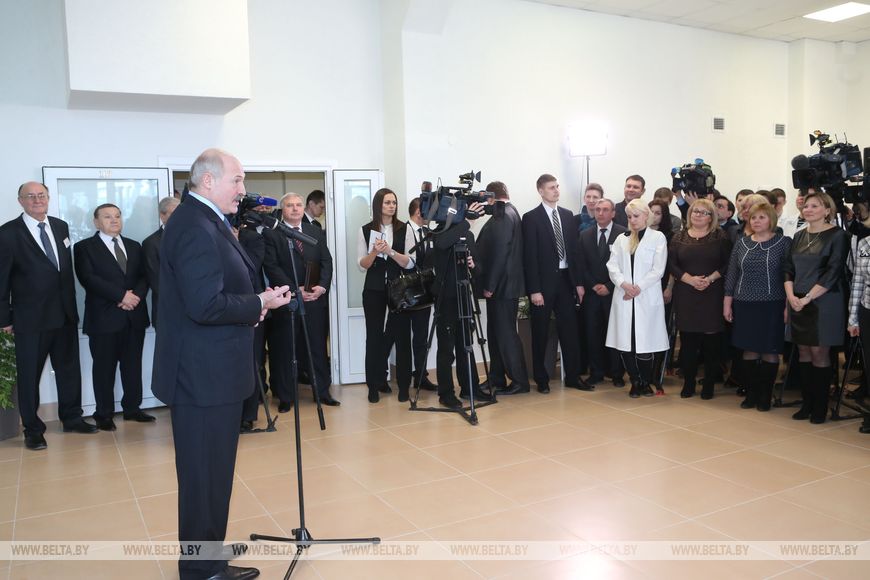
Back in 2003, the Belarusian president instructed scientists and designers to develop Belarus' own satellite for remote sensing of the Earth. The first device BelKa was launched from the Baikonur Cosmodrome in 2006. But it was a failure: the launch vehicle crashed, and almost two dozen satellites on board were not delivered.
Aleksandr Lukashenko was also present at the launch pad. Everyone was waiting for his instructions, wondering what would happen next... The head of state made a very smart and courageous decision - to try again and develop better equipment. This was done.
The weight of the new satellite was reduced to 400 kilograms, while foreign models with a similar set of functions weighed about 6.5 tonnes. Over time, the optics were also improved to allow spacecraft to take pictures of the Earth with a resolution of up to one square meter from an altitude of 500-600 kilometers. In the coming years, photographs from orbit are expected to become even more accurate, with a resolution of under 50cm.
But, no matter how innovative the design idea at the enterprise was, no matter how hard Belarusian scientists tried to stay ahead of the curve, they could not have avoided the fate that befell the whole country with the collapse of the Soviet Union and the rupture of economic ties with other post-Soviet republics. The company's specialists had to take on almost any job. Only cohesion and hard work, loyalty to their profession helped Peleng to survive the most difficult 1990s, maintain production potential and lay a strong foundation for progressive development.
In 1994 the Peleng Central Design Bureau was transformed into an open joint-stock company with a state share of just under 50%. The remaining shares were distributed among the management and employees of the enterprise.
Over time, Peleng became the CIS biggest producer of optoelectronic equipment for the space industry and the defense complex. China was eyeing Belarusian technologies, and Russian partners even tried to buy out the state share in the authorized capital. But Aleksandr Lukashenko kept saying that the enterprise should work in the interests of the Belarusian economy and national security.
“We need to reshape the country. This industry should generate billions of dollars. We will help with everything. This requires a different level of skill, a different mindset. It's good that we can make a seeder, a tractor, a combine harvester but it is crucial to be able to develop space technologies,” Aleksandr Lukashenko said as he visited the company in July 2010.

According to Vladimir Pokryshkin, the proposals were submitted to the Council of Ministers, but the final decision was made by the president. He said: Peleng needs to remain a domestic enterprise. Thus, the question of transferring or selling its shares was no longer raised.
What does Peleng produce today?
Today, Peleng specializes in the development and production of space topographic survey equipment and photogrammetric equipment, devices for trajectory measurements. The company has developed fundamentally new design and technological solutions and hardware to make equipment for high-resolution remote sensing of the Earth. The enterprise has also launched the production of a wide range of meteorological equipment for hydrometeorological network stations, meteorological services of airports. The enterprise designs and produces security systems for the national border and various facilities, means of investigative activities, and forensic equipment.

In 2015 the head of state inspected the company again. He gave the following reason for visiting the enterprise: “The reason for my visit was to make sure that Belarusians are on par with other producers around the world. If the company head does his job well (and he does), things look well for the company. A country is safe and has a future (and prospects for development) only when it works with the technologies of tomorrow. We work in many breakthrough areas, including in the defense sector. The main thing is not to stop. We must keep moving forward."

Back in 2003, the Belarusian president instructed scientists and designers to develop Belarus' own satellite for remote sensing of the Earth. The first device BelKa was launched from the Baikonur Cosmodrome in 2006. But it was a failure: the launch vehicle crashed, and almost two dozen satellites on board were not delivered.
Aleksandr Lukashenko was also present at the launch pad. Everyone was waiting for his instructions, wondering what would happen next... The head of state made a very smart and courageous decision - to try again and develop better equipment. This was done.
The weight of the new satellite was reduced to 400 kilograms, while foreign models with a similar set of functions weighed about 6.5 tonnes. Over time, the optics were also improved to allow spacecraft to take pictures of the Earth with a resolution of up to one square meter from an altitude of 500-600 kilometers. In the coming years, photographs from orbit are expected to become even more accurate, with a resolution of under 50cm.

Many people cannot understand why we need the space industry and insist that it is just a waste of money. But it’s not. This makes perfect economic sense. As I have already said, we earned more than $200 million selling space-related products. And we have grounds to believe that we will be able to maintain momentum,” Vladimir Pokryshkin noted.
What satellites does Peleng make?
Dmitry Sikorsky, Deputy Director General for Science and Technology at Peleng, remarked: “At present, we are developing design documents for a new Russia-Belarus spacecraft with a resolution of 35 cm. The second line of business that we believe is very promising, is the development of simple, technologically advanced and cheap equipment. What does this mean? It means that it can be quickly and easily manufactured, tested and delivered to the customer. It must be technologically advanced and simple so that large multi-satellite constellations could be built on its basis - from 10 to 100 spacecraft in one.”
What satellites does Peleng make?
Dmitry Sikorsky, Deputy Director General for Science and Technology at Peleng, remarked: “At present, we are developing design documents for a new Russia-Belarus spacecraft with a resolution of 35 cm. The second line of business that we believe is very promising, is the development of simple, technologically advanced and cheap equipment. What does this mean? It means that it can be quickly and easily manufactured, tested and delivered to the customer. It must be technologically advanced and simple so that large multi-satellite constellations could be built on its basis - from 10 to 100 spacecraft in one.”


“We are currently developing design documentation for a new Russian-Belarusian spacecraft, whose resolution will be 35cm. The second business direction, which we consider very promising, is the development of simple technological and cheap equipment. It should be manufactured quickly and easily, tested and delivered to the customer. It should be technological and simple to build large, multi-satellite constellations of 10 to 100 spacecraft on its basis,” Dmitry Sikorsky said.
Focus on high technology – number one priority
“It is expensive, but space exploration is among our priorities as it means high technology,” Aleksandr Lukashenko said during his meeting with the then Roscosmos head Dmitry Rogozin in 2020.

The head of state explained then that Belarus places primary focus on the development of high technology since Belarus is not rich in natural resources. “Belarus has always made its living thanks its talented and hardworking people, thanks to their competencies and high qualifications. Space is a litmus test to assess the capabilities and abilities of a state or a nation,” the president said.
Five decades have passed since December 1974 when Peleng became an independent enterprise. The world has changed dramatically since then. The Soviet Union, which occupied one sixth of the globe, collapsed. The Republic of Belarus became an independent state. The country has completely reorganized its economic, industrial and cooperative relations, developed modern technologies and materials. The Peleng enterprise, however, has remained committed to its line of business and is ready for new impressive achievements.





